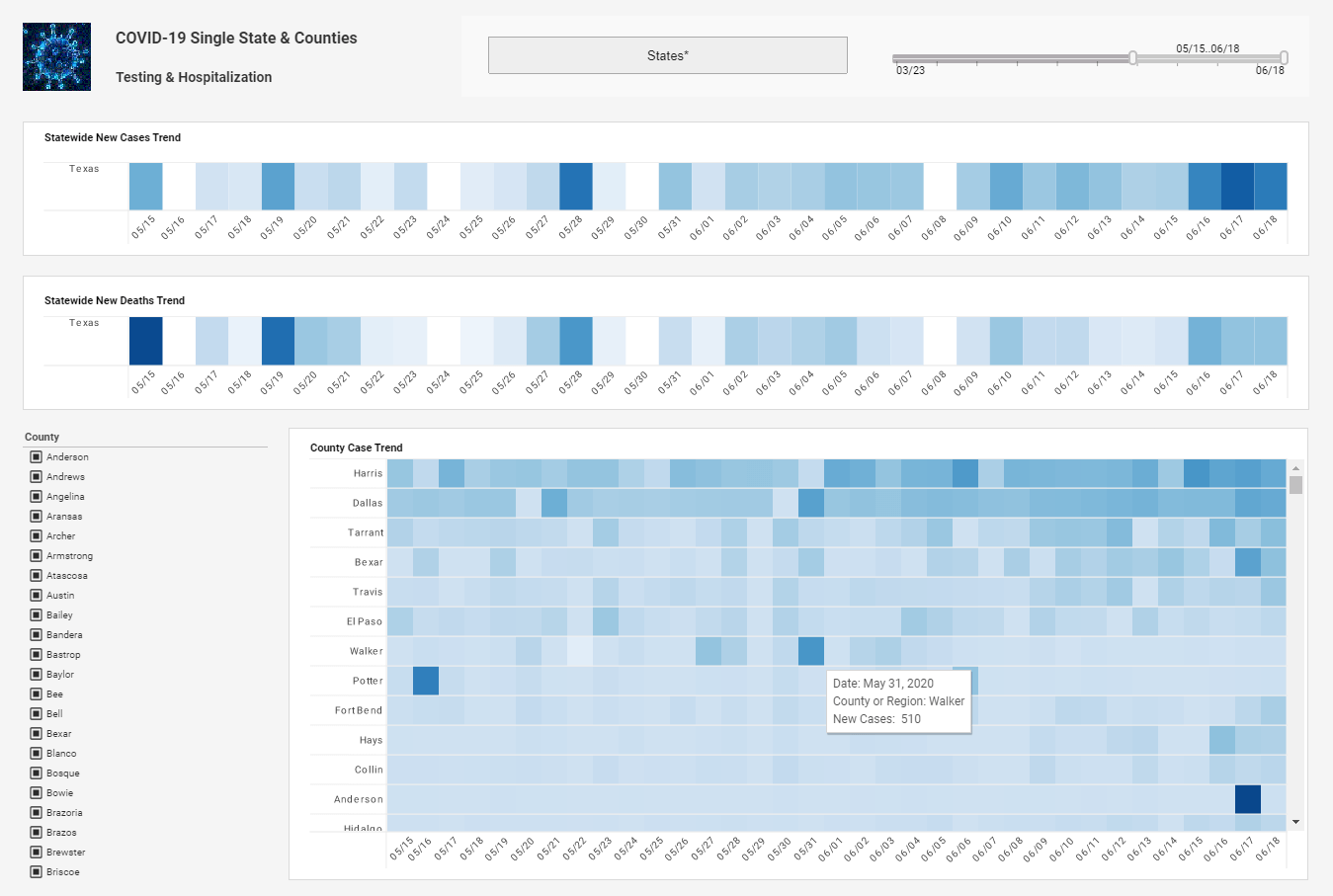InetSoft Webcast: Demo of Interactive Visual Analysis
This is the continuation of the transcript of a Webcast hosted by InetSoft on the topic of "Faster Business Intelligence: Visual Reporting" The speaker is Mark Flaherty, CMO at InetSoft.
Let’s continue with this demo of interactive visual analysis. Next, I’ll multi-select slot hold with a gross profit and revenue and select Insert Metric. I’ll choose the slot hold divided by the slot coined in to get my profit margin, and I’ll put this metric in the size-by. The bubble size now reflects the respective profit margins. We can see that Machine 29 has revenue that’s comparable to most other machines, but it has an abysmal profit margin.
Let’s investigate this further. I’ll drag slot machine amount to the Y-axis and dragging this out reveals that many of the slot machines have similar payouts except for my outlier Machine 289. Clearly, this machine has had too many jackpots and as a result is making almost no profit, less than a penny per dollar. And now pretty quickly I’ve been able to discover why the $100 slot machines are underperforming.
Again, I’ll keep my current view and duplicate it. I’ll rename the scatter plot to $100 slots, and then I’ll go ahead and change the copy I just created to a heat map. A heat map is a contribution analysis data visualization similar to a pie chart but very useful when there are many items in consideration. Here you can clearly see that the size of each box shows a contribution of the $100 slot machines to the total of jackpot and that the 289 Machine is paying off nearly a quarter of that amount.
| #1 Ranking: Read how InetSoft was rated #1 for user adoption in G2's user survey-based index | Read More |
Also, the color tells me that the profitability of the machine is particularly poor. In just a few minutes I now have all the information I need. I will go ahead and rename this to $100 Jackpots. So, in under five minutes I start with a large spreadsheet of data and finished with a dashboard of answers that I created on my own with no help from IT.
As you have seen from the demos, the StyleBI analysis views look a lot like a dashboard. It has many unique views of the same data whether they are maps, line charts, or graph matrices, each of which communicates a unique insight into that data. The key is that the business person can create such an analytical dashboard very quickly in just a few minutes without any help from professional designers. The next logical step is for business people to share their insights with their colleagues. Once they go through the exploration process in step one, in step two they simply save their insights.
In step three they share them with everyone. The difference here is that with StyleBI everyone, particularly business people, become the information publishers, and they don’t rely on your IT group. Multidimensional visual analysis is an exciting feature of the InetSoft BI platform. Specifically, it's available with the StyleBI and Style Scope products. StyleBI empowers business people to get answers to the questions in a way that is simple, powerful, and fast.
Now let’s talk about mobile BI dashboards. They look a lot like the traditional concept of dashboards but they go way beyond traditional dashboards both technically and more importantly in the business impact. Anyone can use dashboards without any additional training. These dynamic dashboards make for interesting new initiatives. You can really build a dashboard based application that serves thousands of users.
 |
Read the top 10 reasons for selecting InetSoft as your BI partner. |
You can basically distribute dashboards to thousands of retail employees on a Monday morning that contain the information to make hundreds of reports for each person, all delivered within a three-hour window. You can make a labor management application for store managers that combines data from SAP and other data sources. You can send an operations dashboard to thousands of store managers to help manage inventories and improve margins at the stores.
What was significant about all these projects? It is that the dashboards are not typical dashboards. They don’t just contain a single page with three or four gauges or a list of KPIs and a graph or two. Instead they contain dozens to hundreds of megabytes of data and dozens to hundreds of use of that data. In fact, they contained all the data that the recipient needed to make all of the operational decisions each day.


